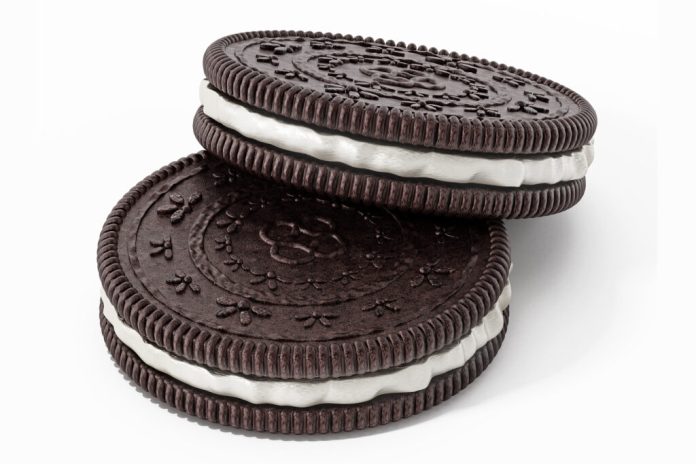in <em class="postcategory"Food & Drink, Science | April 27th, 2022 Leave a Comment
(adsbygoogle = window.adsbygoogle || []).push({});
Despite having been around for well over a century, the Oreo cookie has managed to retain certain mysteries. Why, for example, does it never come apart evenly? Though different Oreo-eaters prefer different methods of Oreo-eating, an especially popular approach to the world’s most popular cookie involves twisting it open before consumption. That action produces two separate chocolate wafers, but as even kindergarteners know from long and frustrating experience, the crème filling sticks only to one side. It seems that no manual technique, no matter how advanced, can split the contents of an Oreo close to evenly, and only recently have a team of researchers at the Massachusetts Institute of Technology sought an explanation.
This endeavor necessitated an investigation of the Oreo’s rheology — the study of the flow of matter, especially liquids but also “soft solids” like crème filling. Like all scientific research, it involved intensive experimentation, and even the invention of a new measurement device: in this case, a simple 3D-printable “Oreometer” (seen in animated action above) that uses pennies and rubber bands.
With it the researchers applied “applied varying degrees of torque and angular rotation, noting the values that successfully twisted each cookie apart,” writes MIT News‘ Jennifer Chu. “In all, the team went through about 20 boxes of Oreos, including regular, Double Stuf, and Mega Stuf levels of filling, and regular, dark chocolate, and ‘golden’ wafer flavors. Surprisingly, they found that no matter the amount of cream filling or flavor, the cream almost always separated onto one wafer.”
Crystal Owens, a mechanical engineering PhD candidate working on this project, puts this down in large part to how Oreos are made. “Videos of the manufacturing process show that they put the first wafer down, then dispense a ball of cream onto that wafer before putting the second wafer on top. Apparently that little time delay may make the cream stick better to the first wafer.” But other physical factors also bear on the phenomenon as well, as documented in the paper Owens and her collaborators published earlier this year in the journal Physics of Fluid. “We introduce Oreology (/ɔriːˈɒlədʒi/), from the Nabisco Oreo for “cookie” and the Greek rheo logia for ‘flow study,’ as the study of the flow and fracture of sandwich cookies,” they write in its abstract. For a scientifically inclined youngster, one could hardly imagine a more compelling field.
Related content:
Science & Cooking: Harvard’s Free Course on Making Cakes, Paella & Other Delicious Food
Norman Rockwell’s Typewritten Recipe for His Favorite Oatmeal Cookies
Dessert Recipes of Iconic Thinkers: Emily Dickinson’s Coconut Cake, George Orwell’s Christmas Pudding, Alice B. Toklas’ Hashish Fudge & More
Making Chocolate the Traditional Way, From Bean to Bar: A Short French Film
MIT Researchers 3D Print a Bridge Imagined by Leonardo da Vinci in 1502— and Prove That It Actually Works
Based in Seoul, Colin Marshall writes and broadcasts on cities, language, and culture. His projects include the Substack newsletter Books on Cities, the book The Stateless City: a Walk through 21st-Century Los Angeles and the video series The City in Cinema. Follow him on Twitter at @colinmarshall or on Facebook.
by Colin Marshall | Permalink | Comments (0) |
We’re hoping to rely on our loyal readers rather than erratic ads. To support Open Culture’s educational mission, please consider making a donation. We accept PayPal, Venmo (@openculture), Patreon and Crypto! Please find all options here. We thank you! ![]()
![]()
(adsbygoogle = window.adsbygoogle || []).push({});
Be the first to comment.
Get the best cultural and educational resources on the web curated for you in a daily email. We never spam. Unsubscribe at any time.
FOLLOW ON SOCIAL MEDIA
(adsbygoogle = window.adsbygoogle || []).push({});
Open Culture scours the web for the best educational media. We find the free courses and audio books you need, the language lessons & educational videos you want, and plenty of enlightenment in between.
Subscribe!function(m,a,i,l,s,t,e,r){m[s]=m[s]||(function(){t=a.createElement(i);r=a.getElementsByTagName(i)[0];t.async=1;t.src=l;r.parentNode.insertBefore(t,r);return !0}())}(window,document,’script’,’https://www.openculture.com/wp-content/plugins/mailster/assets/js/button.min.js’,’MailsterSubscribe’);
©2006-2022 Open Culture, LLC.
All rights reserved.
if you like our Facebook fanpage, you’ll receive more articles like the one you just read!






